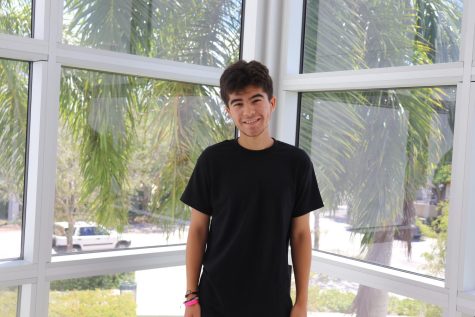Run DMC to Tyler, The Creator: How Hip-Hop Influences Fashion
February 5, 2022
Always against the grain and influential to popular music, hip-hop serves as an important and interesting aspect of the history of fashion, which followed the culture of hip-hop into the mainstream over the last four decades.
Emerging in the late 70s and early 80s, hip-hop made its way through the underground scene of music as a result of DJ Kool Herc’s first known record scratching at a South Bronx house party in 1973. Synonymous with the music, a culture blossomed with many chapters and eras, yet bleeding into a cohesive history that built the hip-hop culture known by millions today.
Hip-hop — much like jazz, funk, blues and other genres that emerged from Black culture — became a means to express discontent with the systems in place and social dismay due to major problems such as the crack (cocaine) epidemic in the 1970s and 80s. Hip-Hop — which is heavily influenced by artists of the past — contains messages that remain true throughout American history.
Hip-hop can be attributed to an attitude, rather than simply the music. It is a modern way of embracing the various sounds, styles and influences of African-American culture, and in reality, any style. Hip-hop can be considered as one of the most accepting and diverse genres of music and cultural identities.
Break dancers — or B-boys — served as a large contributor to the beginning of the culture, as each “crew” would have their own specialized style in order to distinguish themselves from others around them. Outfits from tracksuits and jewelry to bucket hats and snapbacks were an integral aspect of the look of the crews and became a well-known hip-hop staple as a result of acts such as Run DMC and the Beastie Boys.
During the 80s, hip-hop became more focused on the musical aspect rather than the dancing. Emcees and groups such as N.W.A formed a style and aesthetic through specific colors and pieces. Specifically, N.W.A would exclusively wear black and white to represent both their team, the LA Raiders, and to express the bitter anger of young black men in the 80s.
N.W.A knew the power of image in hip-hop. Prior to their reign, “Public Enemy” wore military jackets, baseball caps and massive watches as Run DMC sported a look made of Adidas, Kangol and Lee Jeans. These styles remain synonymous with the music of the time. When one may think of “Straight Outta Compton,” they may imagine Eazy-E or Ice Cube in the late 80s wearing heavy chains, black bomber jackets and their signature black caps with ‘N.W.A’ written across.
The monochrome style of N.W.A further influenced the likes of contemporary rappers such as A$AP Rocky and the entirety of A$AP Mob throughout the 2010s.
1980s fashion in Hip-Hop consisted of sportswear, high fashion and streetwear in large part due to acts such as LL Cool J, Erik B and Rakim, who became the blueprint for where popular fashion would go from there. Opposite to N.W.A, flamboyant tracksuits from brands such as Adidas and Kappa began to capture the eyes of MCs. Air Jordan 1s were also a staple look of the 80s and millions across the globe continue to support the brand, all due to the influence of Hip-Hop. Four finger rings were also a popular staple and can still be seen on the hands of rappers such as 2Chainz.
Hip-Hop in the 1990s continued to morph fashion to express the state that MCs were experiencing, which highly influenced the popular fashion trends of the day.
Kangol continued as one of the dominating brands with their signature bucket hats, while artists such as Nas and Biggie Smalls sported Timberland Boots. Becoming a staple fashion trend of 1990s R&B and Hip-Hop, Timberland transcended its status from only boots for construction workers to stylish fashion pieces.
Long silhouettes and oversized clothes heavily contributed to fashion in the 90s as well. Many of the original acts of this time struggled to buy clothing for themselves, wearing hand-me-downs from older siblings; this style continued through the 90s and early 2000s.
Denim dungarees and other denim apparel became a staple for artists such as Tupac Shakur, TLC, Fugees and Will Smith. An example of this is Will Smith’s apparel in the “Fresh Prince of Bel-Air,” Smith’s show from the mid to late 1990s. In the modern day, Supreme released a pair of dungarees in collaboration with Louis Vuitton in their Spring-Summer season in 2017.
“Hip hop influences everyone, its core ideals being something the masses gravitate towards,” Miami Palmetto Senior High junior and Hip-Hop enthusiast Lucas Martinez said. “Since hip hop is something so many people can get behind, icons within the industry show what it means to be fashionable in their own unique way, creating iconic trends through the decades.”
Native patterns from African culture also became popular among groups and acts such as: A Tribe Called Quest, Brand Nubian and Queen Latifa throughout the 1990s. The look supported Pro-African and Afrocentric ideas of thinking positively and spiritually.
The almigmation of Hip-Hop culture only became more prevalent as the music became more and more mainstream. With acts such as Wu-Tang, A Tribe Called Quest and many others emerging from the 1990s, culture made a massive shift and focused its attention towards Hip-Hop.
“It’s [hip-hop] such a diverse genre. There’s a subgenre and subculture for anything you can think of,” Palmetto music producer and junior Dylan Morris said. “There’s people like ZillaKami that have metal influences in their music and on the other hand there’s people making more mainstream [music] like Gunna or Lil Baby and then there’s people bringing Alt Rock or Emo sound like Lil Peep or Juice WRLD, and I just think that it’s probably the most accepting genre because it’s the most diverse. There’s a hip-hop community for anything you can think of.”
The creation of record labels such as Death Row Records out of California, Roc A Fella and Def Jam Records out of New York all sported their own respected aesthetics and styles depending on the area of creation. Fashion — as well as most aspects of culture — heavily depend on the area of founding.
Perpetuated by the internet and popular acts of the age, the 2000s added onto the 90s and created increasing reference points for what was in fashion.
From The Neptunes, with Pharrell Williams sporting trucker hats, all over print t-shirts, heavy chains and big watches, which were all colorful and made Pharrell a large part of the image of the time. A Bathing Ape creator and current creative director at Kenzo, Nigo, was also a large benefactor in the movement of fashion in the 2000s. The creation of Bape, and Pharrell’s support of the brand, brought streetwear to new heights throughout this time period.
“Fashion trends with lots of ambition — flashy colors, baggier/tighter, distinct patterns, minimalistic design — tend to gain a lot of traction when influential artists spread the word through music/social media platforms, and surprisingly, even through other modern-day approaches like memes,” Martinez said.
Artists such as Kanye West also brought new perspectives to the world of fashion. With his signature look of Louis Vuitton backpacks and polo collared shirts at the beginning of his career, he was — and continues to be — an influential part of Hip-Hop culture. Fashion designer, album cover artist, DJ and close friend to West, Virgil Alboh became the artistic director for Louis Vuitton in 2017 and the brand was transformed. Abloh helped push the brand to create a more inclusive place for high fashion by mixing elements of street wear with high-end fashion trends and collaborating with brands such as Supreme and Nike.
“I would say Kanye West, Virgil Abloh and Tyler the Creator, and Frank Ocean are some of the most notable figures in hip hop who have contributed to a lot of the fashion we see today,” Martinez said. “Tupac Shakur was also known as a prominent figure in the influence of fashion, practically defining the early stages of street fashion, consisting of chains, bandanas, and baggy clothing.”
Brands such as Supreme may attribute some of their success to the rise of groups such as Odd Future in the 2000s, as they frequently used the classic Supreme five panel caps, t-shirts and hoodies.
In the present day, Hip-Hop continues to push the boundaries of fashion and influence culture.
Influential artists may support brands, but artists such as Pharrell, with his Billionaire Boys Club line and recently Human Made, as well as Tyler, The Creator with GOLF and GOLF Le Fleur, create influential parts of the culture that supporters frequently use. These brands may even transcend the artist’s name and be worn without association to the original creator.
“Tyler fans, they see how he dresses and want to dress like him. So he’s definitely a big influence,” Morris said.
Artists in the post-Sound Cloud era of music have sported brands such as Bape and Louis Vuitton, but also brands such as Vlone, Off White (also created by Abloh), OBEY and Carhartt. Musicians such as Lil Uzi Vert and Lil Yachty also continue the staple of heavy jewelry to compliment their outfits and play the role of highlighting their lives of luxury. Current rappers oftenly use these brands within lines of their songs and tracks, causing many fans to only recognize the names of each brand due to the usage of its name in a song.
“I know nothing about fashion and I listen to a lot of Hip-hop,” Morris said. “So the fact that I don’t know anything goes to show how much hip hop influences fashion.”
From the heart of the music to the clothes that are built alongside it, Hip-hop holds an immense grip on pop culture and continues to grow with the evolution of the genre.








